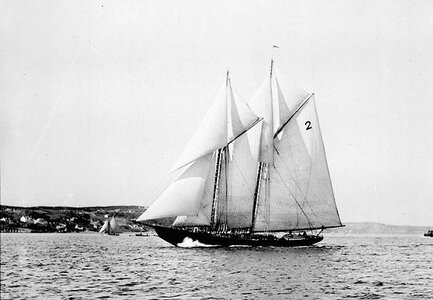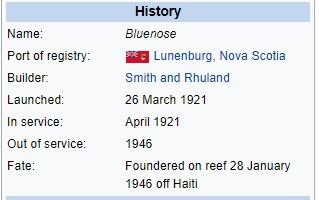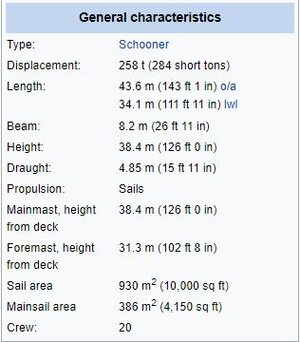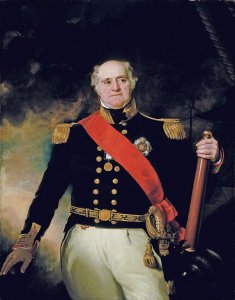Today in Naval History - Naval / Maritime Events in History
25th of March
please use the following link and you will find the details and all events of this day ..... in the following you will find some of the events
1708 - Launch of HMS Ruby, a 50-gun fourth rate ship of the line of the Royal Navy, built by Sir Joseph Allin at Deptford Dockyard to the 1706 Establishment,
HMS Ruby was a 50-gun fourth rate ship of the line of the Royal Navy, built by Sir Joseph Allin at Deptford Dockyard to the 1706 Establishment, and launched on 25 March 1708.

1708 - Launch of HMS Resolution, a 70-gun third rate ship of the line of the Royal Navy, built by Sir Joseph Allin according to the 1706 Establishment at Deptford Dockyard,
HMS Resolution was a 70-gun third rate ship of the line of the Royal Navy, built by Sir Joseph Allin according to the 1706 Establishment at Deptford Dockyard, and launched on 25 March 1708. Resolution was wrecked in 1711.

1745 – Birth of John Barry (naval officer), American naval officer and father of the American navy (d. 1803)
John Barry (March 25, 1745 – September 13, 1803) was an officer in the Continental Navy during the American Revolutionary Warand later in the United States Navy. He came to be widely credited as "The Father of the American Navy" (and shares that moniker with John Paul Jones and John Adams) and was appointed a captain in the Continental Navy on December 7, 1775. He was the first captain placed in command of a U.S. warship commissioned for service under the Continental flag.
After the war, he became the first commissioned U.S. naval officer, at the rank of commodore, receiving his commission from President George Washington in 1797.
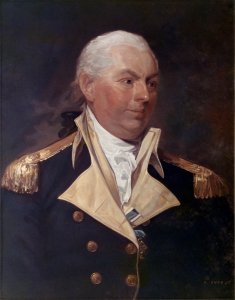
1795 - HMS Speedy was a 14-gun Speedy-class brig of the British Royal Navy, recaptured from the French
HMS Speedy was a 14-gun Speedy-class brig of the British Royal Navy. Built during the last years of the American War of Independence, she served with distinction during the French Revolutionary Wars.
Built at Dover, Kent, Speedy spent most of the interwar years serving off the British coast. Transferred to the Mediterranean after the outbreak of the French Revolutionary Wars, she spent the rest of her career there under a number of notable commanders, winning fame for herself in various engagements and often against heavy odds. Her first commander in the Mediterranean, Charles Cunningham, served with distinction with several squadrons, assisting in the capture of several war prizes, such as the French frigates Modeste and Impérieuse. His successor, George Cockburn, impressed his superiors with his dogged devotion to duty. Speedy's next commander, George Eyre, had the misfortune to lose her to a superior French force on 9 June 1794.
She was soon retaken, and re-entered service under Hugh Downman, who captured a number of privateers between 1795 and 1799 and fought off an attack by the large French privateer Papillon on 3 February 1798. His successor, Jahleel Brenton, fought a number of actions against Spanish forces off Gibraltar. Her last captain, Lord Cochrane, forced the surrender of a much larger Spanish warship, the Gamo. Speedy was finally captured by a powerful French squadron in 1801 and donated to the Papal Navy by Napoleon the following year. She spent five years with them under the name San Paolo, but was struck around 1806.

1802 Treaty of Amiens signed, ending French Revolutionary Wars.
The Treaty of Amiens (French: la paix d'Amiens) temporarily ended hostilities between France and the United Kingdom during the French Revolutionary Wars. It was signed in the city of Amiens on 25 March 1802 (4 Germinal X in the French Revolutionary calendar) by Joseph Bonaparte and Marquess Cornwallis as a "Definitive Treaty of Peace." The consequent peace lasted only one year (18 May 1803) and was the only period of general peace in Europe between 1793 and 1814.
Under the treaty, Britain recognised the French Republic. Together with the Treaty of Lunéville (1801), the Treaty of Amiens marked the end of the Second Coalition, which had waged war against Revolutionary France since 1798.

1804 - HMS Magnificent (74), Cptn. W. H. Jervis, wrecked near the Pierres Noires, Brest.
HMS Magnificent was a 74-gun third-rate ship of the line of the Royal Navy, launched on 20 September 1766 at Deptford Dockyard. She was one of the Ramillies-class built to update the Navy and replace ships lost following the Seven Years' War. She served through two wars before her loss during blockade duty off the French coast.

1804, March 25 or 28 – HMS Hippomenes captures French privateer Egyptienne
On 23 March 1804, the British 18-gun sloop Osprey gave chase to four ships that turned out to be a frigate and three merchant ships. Osprey badly damaged the frigate Egyptienne in a close, 80-minute action near Barbados before Egyptienne used her superior speed to escape. Osprey lost one man killed and 16 wounded in the action and her hull and rigging were badly damaged.
On the 25th, Osprey and the British 18-gun sloop Hippomenes recaptured the Reliance, one of several prizes that Egyptienne had taken. From the prize master the British found out the identity of the vessel that Osprey had fought.
On 25 March 1804 or 27 March 1804 Hippomenes captured the damaged Egyptienne after a 54-hour chase followed by a three-hour, 20-minute single-ship action. Egyptienne was under the command of M. Placiard and had a crew of 255 men. After Hippomenses captured Egyptienne, the British found out that she had lost eight men killed and 19 wounded in the fight with Osprey. Hippomenes had only one man slightly wounded.
The British took Egyptienne into service as HMS Antigua as there was already an Egyptienne in the Royal Navy. Because Egyptienne was twenty-five years old, and battered, the Navy decided against sending her to sea again. Lieutenant James Middleton commissioned her in December 1808 and commanded her until 1815. From December 1808 Antigua served as a prison hulk until scrapped in 1816.

1808 - HMS Electra Sloop (16), G. Trollope, wrecked on a reef at the entrance of Port Augusta, Sicily.
HMS Electra was a British Royal Navy 16-gun brig-sloop of the Seagull class launched in 1806. She wrecked off Port Augusta, Sicily, on 25 March 1808. The Navy was able to salve her, but then had her broken up at Malta later that year.
Electra was returning to Port Augusta with payroll for the troops on Sicily. As she was working her way into the bay at 8a.m. she hit the outer edge of a reef. By mid-afternoon all efforts to save her had failed and she was awash. The decision was made to abandon her. The subsequent court martial faulted Trollope for having tried to enter an unfamiliar port without calling for a pilot and for failing to use a lead. The court martial ordered that Trollope be put at the bottom of the list of Commanders. The court martial also reprimanded Lieutenant Richard Connelly for having left the deck while Electra was on the reef.

1872 – Launch of HMS Thunderer, one of two Devastation-class ironclad turret ships
HMS Thunderer was one of two Devastation-class ironclad turret ships built for the Royal Navy in the 1870s. She suffered two serious accidents before the decade was out and gained a reputation as an unlucky ship for several years afterward. The ship was assigned to the Mediterranean Fleet in 1878 and was reduced to reserve in 1881 before being recommissioned in 1885. Thunderer returned home in 1887 and was again placed in reserve. She rejoined the Mediterranean Fleet in 1891, but was forced to return to the UK by boiler problems the following year. The ship became a coast guard ship in Wales in 1895 and was again placed in reserve in 1900. Thunderer was taken out of service in 1907 and sold for scrap in 1909.

1893 - Glückauf was a German ship that represented a major step forward in oil tanker design.
"When the Glückauf sailed from the Tyne on 10 July 1886 she was the first ocean going tanker with oil to her skin".
The vessel was in use from 1886 to 25 March 1893, when it ran aground at Fire Island in New York.
Glückauf was a German ship that represented a major step forward in oil tanker design. "When the Glückauf sailed from the Tyne on 10 July 1886 she was the first ocean going tanker with oil to her skin". The vessel was in use from 1886 to 25 March 1893, when it ran aground at Fire Island in New York.

1941 - SS Britannia, a British steam passenger ship, was sunk by the German auxiliary cruiser Thor with the loss of 122 crew and 127 passengers.
SS Britannia was a British steam passenger ship which was sunk by a German merchant raider during the Second World War.

25th of March
please use the following link and you will find the details and all events of this day ..... in the following you will find some of the events
Naval/Maritime History - 27th of August - Today in Naval History - Naval / Maritime Events in History
Today in Naval History - Naval / Maritime Events in History 24 March 1747 – Launch of French Intrépide 74 at Brest - burnt by accident in July 1781 The Intrépide was a 74-gun ship of the line of the French Navy. She was of three ships of the Monarque class, all launched in 1747, the others...
shipsofscale.com
1708 - Launch of HMS Ruby, a 50-gun fourth rate ship of the line of the Royal Navy, built by Sir Joseph Allin at Deptford Dockyard to the 1706 Establishment,
HMS Ruby was a 50-gun fourth rate ship of the line of the Royal Navy, built by Sir Joseph Allin at Deptford Dockyard to the 1706 Establishment, and launched on 25 March 1708.
1708 - Launch of HMS Resolution, a 70-gun third rate ship of the line of the Royal Navy, built by Sir Joseph Allin according to the 1706 Establishment at Deptford Dockyard,
HMS Resolution was a 70-gun third rate ship of the line of the Royal Navy, built by Sir Joseph Allin according to the 1706 Establishment at Deptford Dockyard, and launched on 25 March 1708. Resolution was wrecked in 1711.
1745 – Birth of John Barry (naval officer), American naval officer and father of the American navy (d. 1803)
John Barry (March 25, 1745 – September 13, 1803) was an officer in the Continental Navy during the American Revolutionary Warand later in the United States Navy. He came to be widely credited as "The Father of the American Navy" (and shares that moniker with John Paul Jones and John Adams) and was appointed a captain in the Continental Navy on December 7, 1775. He was the first captain placed in command of a U.S. warship commissioned for service under the Continental flag.
After the war, he became the first commissioned U.S. naval officer, at the rank of commodore, receiving his commission from President George Washington in 1797.

1795 - HMS Speedy was a 14-gun Speedy-class brig of the British Royal Navy, recaptured from the French
HMS Speedy was a 14-gun Speedy-class brig of the British Royal Navy. Built during the last years of the American War of Independence, she served with distinction during the French Revolutionary Wars.
Built at Dover, Kent, Speedy spent most of the interwar years serving off the British coast. Transferred to the Mediterranean after the outbreak of the French Revolutionary Wars, she spent the rest of her career there under a number of notable commanders, winning fame for herself in various engagements and often against heavy odds. Her first commander in the Mediterranean, Charles Cunningham, served with distinction with several squadrons, assisting in the capture of several war prizes, such as the French frigates Modeste and Impérieuse. His successor, George Cockburn, impressed his superiors with his dogged devotion to duty. Speedy's next commander, George Eyre, had the misfortune to lose her to a superior French force on 9 June 1794.
She was soon retaken, and re-entered service under Hugh Downman, who captured a number of privateers between 1795 and 1799 and fought off an attack by the large French privateer Papillon on 3 February 1798. His successor, Jahleel Brenton, fought a number of actions against Spanish forces off Gibraltar. Her last captain, Lord Cochrane, forced the surrender of a much larger Spanish warship, the Gamo. Speedy was finally captured by a powerful French squadron in 1801 and donated to the Papal Navy by Napoleon the following year. She spent five years with them under the name San Paolo, but was struck around 1806.
1802 Treaty of Amiens signed, ending French Revolutionary Wars.
The Treaty of Amiens (French: la paix d'Amiens) temporarily ended hostilities between France and the United Kingdom during the French Revolutionary Wars. It was signed in the city of Amiens on 25 March 1802 (4 Germinal X in the French Revolutionary calendar) by Joseph Bonaparte and Marquess Cornwallis as a "Definitive Treaty of Peace." The consequent peace lasted only one year (18 May 1803) and was the only period of general peace in Europe between 1793 and 1814.
Under the treaty, Britain recognised the French Republic. Together with the Treaty of Lunéville (1801), the Treaty of Amiens marked the end of the Second Coalition, which had waged war against Revolutionary France since 1798.
1804 - HMS Magnificent (74), Cptn. W. H. Jervis, wrecked near the Pierres Noires, Brest.
HMS Magnificent was a 74-gun third-rate ship of the line of the Royal Navy, launched on 20 September 1766 at Deptford Dockyard. She was one of the Ramillies-class built to update the Navy and replace ships lost following the Seven Years' War. She served through two wars before her loss during blockade duty off the French coast.
1804, March 25 or 28 – HMS Hippomenes captures French privateer Egyptienne
On 23 March 1804, the British 18-gun sloop Osprey gave chase to four ships that turned out to be a frigate and three merchant ships. Osprey badly damaged the frigate Egyptienne in a close, 80-minute action near Barbados before Egyptienne used her superior speed to escape. Osprey lost one man killed and 16 wounded in the action and her hull and rigging were badly damaged.
On the 25th, Osprey and the British 18-gun sloop Hippomenes recaptured the Reliance, one of several prizes that Egyptienne had taken. From the prize master the British found out the identity of the vessel that Osprey had fought.
On 25 March 1804 or 27 March 1804 Hippomenes captured the damaged Egyptienne after a 54-hour chase followed by a three-hour, 20-minute single-ship action. Egyptienne was under the command of M. Placiard and had a crew of 255 men. After Hippomenses captured Egyptienne, the British found out that she had lost eight men killed and 19 wounded in the fight with Osprey. Hippomenes had only one man slightly wounded.
The British took Egyptienne into service as HMS Antigua as there was already an Egyptienne in the Royal Navy. Because Egyptienne was twenty-five years old, and battered, the Navy decided against sending her to sea again. Lieutenant James Middleton commissioned her in December 1808 and commanded her until 1815. From December 1808 Antigua served as a prison hulk until scrapped in 1816.
1808 - HMS Electra Sloop (16), G. Trollope, wrecked on a reef at the entrance of Port Augusta, Sicily.
HMS Electra was a British Royal Navy 16-gun brig-sloop of the Seagull class launched in 1806. She wrecked off Port Augusta, Sicily, on 25 March 1808. The Navy was able to salve her, but then had her broken up at Malta later that year.
Electra was returning to Port Augusta with payroll for the troops on Sicily. As she was working her way into the bay at 8a.m. she hit the outer edge of a reef. By mid-afternoon all efforts to save her had failed and she was awash. The decision was made to abandon her. The subsequent court martial faulted Trollope for having tried to enter an unfamiliar port without calling for a pilot and for failing to use a lead. The court martial ordered that Trollope be put at the bottom of the list of Commanders. The court martial also reprimanded Lieutenant Richard Connelly for having left the deck while Electra was on the reef.
1872 – Launch of HMS Thunderer, one of two Devastation-class ironclad turret ships
HMS Thunderer was one of two Devastation-class ironclad turret ships built for the Royal Navy in the 1870s. She suffered two serious accidents before the decade was out and gained a reputation as an unlucky ship for several years afterward. The ship was assigned to the Mediterranean Fleet in 1878 and was reduced to reserve in 1881 before being recommissioned in 1885. Thunderer returned home in 1887 and was again placed in reserve. She rejoined the Mediterranean Fleet in 1891, but was forced to return to the UK by boiler problems the following year. The ship became a coast guard ship in Wales in 1895 and was again placed in reserve in 1900. Thunderer was taken out of service in 1907 and sold for scrap in 1909.
1893 - Glückauf was a German ship that represented a major step forward in oil tanker design.
"When the Glückauf sailed from the Tyne on 10 July 1886 she was the first ocean going tanker with oil to her skin".
The vessel was in use from 1886 to 25 March 1893, when it ran aground at Fire Island in New York.
Glückauf was a German ship that represented a major step forward in oil tanker design. "When the Glückauf sailed from the Tyne on 10 July 1886 she was the first ocean going tanker with oil to her skin". The vessel was in use from 1886 to 25 March 1893, when it ran aground at Fire Island in New York.
1941 - SS Britannia, a British steam passenger ship, was sunk by the German auxiliary cruiser Thor with the loss of 122 crew and 127 passengers.
SS Britannia was a British steam passenger ship which was sunk by a German merchant raider during the Second World War.




